A Chat with Author Cara Black about Her New Book, Murder in Saint Germain
- SUBSCRIBE
- ALREADY SUBSCRIBED?
BECOME A BONJOUR PARIS MEMBER
Gain full access to our collection of over 5,000 articles and bring the City of Light into your life. Just 60 USD per year.
Find out why you should become a member here.
Sign in
Fill in your credentials below.
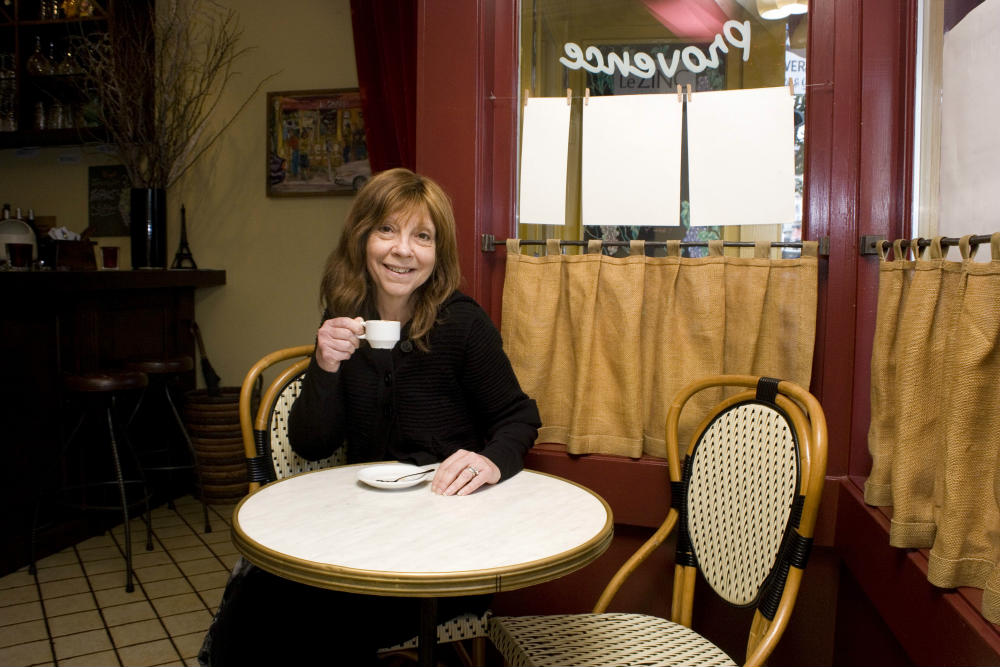
Author Cara Black/ photographer Laura Skayhan
Cara Black is the author of 17 books in a series of detective novels featuring Aimée Leduc, the fashionably attired, unfailingly intrepid Parisian private investigator. In the latest book in the series, Murder in Saint Germain, Aimée finds herself involved in a complicated series of situations all centered in the sixth arrondissement. As usual, in addition to a plot full of heart-pounding, mind-boggling intrigue and narrow escapes, Black’s stories treat those who love Paris to vividly-rendered scenes in favorite Parisian locations. This time some of them include the Ecole des Beaux Arts, the Jardin de Luxembourg, back offices of the Sénat, the church of St Germain-des-Près, and the Closerie des Lilas, famous as one of Hemingway’s favorite cafés. Complicating matters for Aimée as she pursues her work is the fact that she is now the single mother of an eight-month old baby. Black’s fans will be delighted to know that the book will be released on June 6. Cara recently took the time to answer Janet Hulstrand’s questions about her latest work via email.
JH: What’s the most interesting or surprising thing you learned about the sixth arrondissement–or maybe about Paris–in writing Murder in Saint Germain?
CB: Good question, Janet. I was lucky enough to be invited, after a lot of begging, to tour the Saint Germain area with Patrick, a commander in the Brigade Criminelle (the elite Paris homicide squad). The Saint-Germain quarter was Patrick’s first “beat” as a new flic after graduating from the police academy. It was fascinating to walk with him on his old haunts in the quarter. He told me about his first cases, the investigations, and we actually visited where they happened. It opened my eyes. “Here” he said, “we found an old woman who’d been murdered, and solved the murder by uncovering a robbery that had gone wrong.” He pointed to the rooftops and explained how a lot of burglaries happened via the skylights. He talked about policing at that time, in the 1990s, and how, as an effective flic, you needed to know your community and nourish your contacts. He used to see Marcel Carné, the famous film director of les Enfants du Paradis, who lived next door to the Commissariat. He said Monsieur Carné would always say bonjour to him!
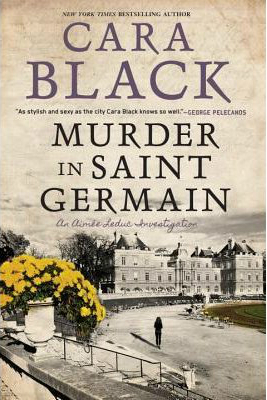
Murder in Saint Germain by Cara Black
JH: You’ve been in some very interesting situations in the course of researching your stories, and I must say I think you are almost as intrepid in pursuing your stories as Aimée is in pursuing villains. What’s the funniest, or most unusual, situation you found yourself in the course of researching this book?
CB: Stooping and crab walking in the old tunnels under the Jardin du Luxembourg! Seriously, these underground tunnels traverse juste à côté to Boulevard Saint Michel, and are deep underground. They are full of history and stories, from rumored royal escapes to exploits during World War II. They also house air raid shelters used by the German Luftwaffe, who were stationed in the Lycée Montaigne during the Occupation. There are still signs down there in German, and rusted memorabilia. Oddly, the temperature is moderate: maybe it’s because the walls are made of limestone. It’s another world down there, quiet and full of the past.
JH: Plot is of course of utmost importance in a policier. Do you plot your stories through to the end before you start writing, or does the plot develop organically along the way, as you are writing the story?
CB: More organically. In MURDER IN SAINT-GERMAIN, I knew Aimée was a single mom with an eight-month-old, that she had unresolved guilt issues about her godfather Morbier, and that she’d be doing computer security at the Ecole des Beaux Arts. In crime fiction, policiers, it’s about sticking your protagonist out on a limb, then chopping it down so they must climb higher and higher, and the branches get thinner and thinner. Putting your protagonist in conflict reveals their character. I’ve lived with Aimée for a long time, and I try to deepen her character and the problems she faces, which I hope reflect what a contemporary Parisian faces. I met a female police officer, also part of an elite squad, for lunch, and I was dying to hear about her job, what it was like to work in a male-dominated place. But she kept bringing the conversation back to her secondment in the Hague. She was working in the Balkans as part of an international team for the International Court, on crimes committed in the former Yugoslavia. Her tales were harrowing, and she suffered what we’d call PTSD. Only then did I realize that was part of the story I wanted to tell here. Had to tell.
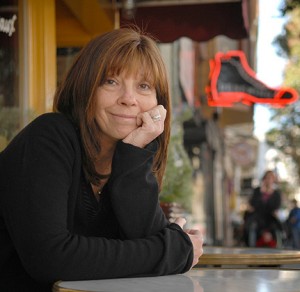
Cara Black
JH: One of the things I love about your writing is a kind of cinematic quality to your descriptions of Paris as Aimée moves around it. You have a great way of rendering not only the complicated action at the center of your plot, but also the background details. How do you do this? Do you take notes of actual scenes you observe while you’re in Paris, or are you able to create these little vignettes out of your memory, or your imagination?
CB: When I’m in Paris I take photos, record street sounds, and the wonderful life in the cafés. I take a lot of notes and eavesdrop on conversations on the #96 bus, which goes from Belleville through the city to Montparnasse. It’s my favorite bus line because you traverse the city, right to left bank, and the passengers reflect it. Being a “mapaholic,” and walking the streets at different times of the day informs a scene – it’s always important, for me it’s vital, to visit a place at different times of the day to see how the light falls, the sounds, the morning bustle at the café, people returning home from work, stopping for an apéritif. I like to paint the quarter as it lives and breathes. Paris is about the senses, and about textures, and my goal is to bring that alive.
JH: Which arrondissement will Aimée take us to vicariously, in your next novel? And what are you going to do when you run out of arrondissements? I’m sure some of your readers are beginning to worry about this…
CB: I can’t say until my editor gives the ok, desolée. But I can reveal that it’s back on the Left Bank in a quarter I’ve wanted to write about for a long time, where Aimée gets into more trouble. Yes, I’m running out of arrondissements…but there’s always crime in Marseille, or murder in a chateau…non?
Purchase Cara’s book on Amazon below:
Lead photo credit : "Murder in Saint Germain" by Cara Black
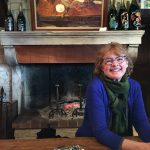
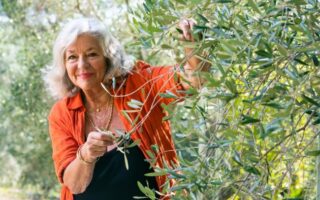


REPLY